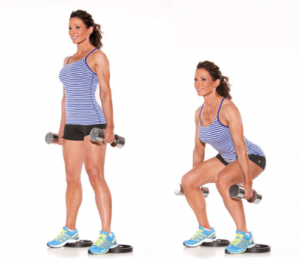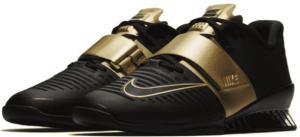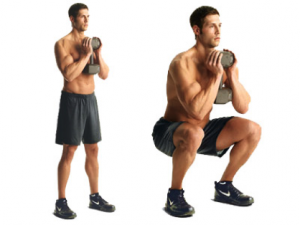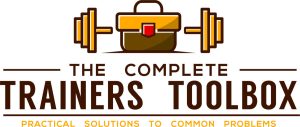Simple Solutions to a Better Squat
Today’s post comes from Dr. Sam Spinelli, a doctor of physical therapy who can also out-lift most everyone else in the gym. Sam is a contributor to the Complete Trainers Toolbox, so definitely check out his squat section when you purchase your copy.
*****
Squatting is a fantastic movement for overall lower body development and makes you a stronger more challenging person to kill. With that said, squatting is one of those movements that you find people are either in love with it, or despise it. Those who love it are often able to drop it like it’s hot and appear to have no difficulty with the movement. In contrast, those who usually aren’t big fans tend to be the ones that also struggle with the movement feeling comfortable, aren’t able to get good depth, and generally skip it as much as possible.
For most people who struggle with squatting there are some easy ways to improve their squat quickly. Using these easy solutions we can take the person from avoiding it, to crushing it with aptitude, becoming a squat advocate. Below are three easy solutions you can add to your training or your client’s training instantly and see them go from squat struggles to squat sultan.
- Heel elevation

Image link – https://www.oxygenmag.com/.image/t_share/MTQ1MzQ3MzE1NDM0NzI3MTg1/elevated-dumbbel-squat.jpg
See how happy she is from that heel elevation?
If you’ve ever watched olympic style weightlifting, you probably noticed the athletes wear shoes with a heel elevation. This done with purposefully intent to allow a more upright and deeper receiving position (overhead squat or front squat).
Having the heel elevated helps to bias the ankle and provide pseudo ankle dorsiflexion for the tibia to translate forward – AKA let’s the knee go more forward. As this happens it let’s individuals sit more straight down and stay more upright, something which we are often coaching people to try and do.

Image link – https://mk0barbendl86qlfmi9n.kinstacdn.com/wp-content/uploads/2017/09/Screenshot-2017-09-12-at-3.40.41-PM.png
A small heel lift in the form of a 2.5lbs plate under each heel, a workout wedge, or some lifting shoes will accomplish the task. The wedges and shoes are a better option than the plate for safety.
Some may argue that elevating the heels isn’t functional, but let’s just keep in mind that this is a means to an end for improved performance and enjoyment, which we can progress away from in time.
- Anterior load

Image link – http://www.directlyfitness.com/store/wp-content/uploads/2012/09/goblet-squat.jpg
Elevating the heels may not be right for everyone, or it might not be enough for others. Another great option is transitioning your weight anteriorly – such as a goblet squat, front squat, or zercher squat. Each of these variations helps to move the load forward in front of the torso, allowing a greater degree of posterior weight shifting without losing your balance.
The easiest option for most people is a goblet squat to start learning and find instant success. However, for those who start to push themselves and get up in weight, a goblet squat can be very limiting and more of a challenge to the arms/upper body than the legs. That’s where the front squat and zercher squat come in. Assuming you learn how to hold the bar in the front squat, it can be loaded up quite heavy without much discomfort. For the zercher, a good bar pad is clutch and can accommodate some significant loading.
Goblet Squat –
Front Squat –
Zercher Squat –
- Tempo
The above options are great, but they require changing the movement and for some people that might not be desirable. That’s where this third tip comes in – adjusting tempo. Utilizing a different scheme for the descent, time in the bottom, ascent, and time at the top can be a phenomenal adjustment.
For example, a lot of people will lower down over a course of half a second to 1 second, hit a challenging spot, then reverse up. If instead we transition that to a tempo of 3:1:3:1 where we lower over the course of three seconds, pause at the bottom, come up slowly over the course of three seconds, and pause momentarily at the top, that person will likely be able to achieve better depth and have more control over the movement.
Generally slowing down the descent, having a pause in the bottom, and having a controlled ascent is a great way to work on the control of the movement and clean up a lot of things quickly. You will need to lower the amount of weight you use, but you’ll get more control on the movement to allow you to lift more weight in the future.

If you want to learn more easy solutions and long term solutions for squat form and so much more on squatting, check out my presentation All Things Squats, Knees, and Hips as a part of the complete trainer’s toolbox. It’s on a Summer sale pricing for $100 off the regular price until Sunday July 5th 2020 at midnight, so act now to get the entire package and save some money. You can even split payments up over 4 months to make it easier to afford.
Click HERE for more info and to get your copy